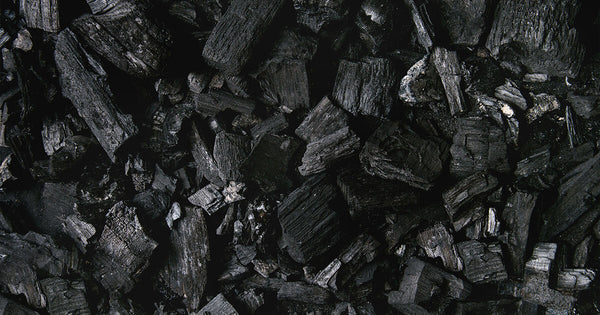How Activated Carbon Works in Cannabis Extract
Apr 28, 2021
For better looking and tasting cannabis extracts, using color remediation technology can help transform cannabis oil of any quality into a lighter-colored and tastier product. One of the most popular and effective types of filter media used by oil processors is activated carbon.
Activated carbon, also known as activated charcoal, is an extremely efficient filter media used to remove the dark color from extracts. Other common filter media include fine powders such as diatomaceous earth and activated bentonite clay, all of which can remove undesirables from the cannabis extract.
What Is Activated Carbon?
 Activated charcoal is one of the most widely used filtration materials across a broad range of industries, not just botanical extraction. In fact, there are over 2,500 commercial product applications for this versatile form of carbon.
Activated charcoal is one of the most widely used filtration materials across a broad range of industries, not just botanical extraction. In fact, there are over 2,500 commercial product applications for this versatile form of carbon.
Across the board, activated charcoal is used to help in the removal of toxins in a variety of substances. Industrial applications include, but are not limited to:
-
Drinking water filtration
-
Precious metal recovery
-
Air and gas filtration
-
Animal feed additive
-
Chemical analysis
In short, activated charcoal has powerful purifying characteristics capable of trapping contaminants from a broad range of substances, including liquids and gases.
Activated charcoal is made from a variety of source materials containing a high level of carbon including:
-
Bamboo
-
Coconut husk
-
Wood
-
Willow peat
-
Coir
-
Lignite
-
Coal
-
Petroleum pitch
What Does Activated Charcoal Do?
In its normal form, carbon is porous, but a high-tech manufacturing technique can physically or chemically activate the carbon to produce a significantly more porous material with an impressive surface area. Activated charcoal has a surface area of over 21,000 square feet!
In its activated form, carbon is mind-bogglingly porous. A network of micropores provides an abundance of bonding sites that attract certain compounds like a magnet. In a process known as adsorption, activated charcoal holds organic compounds from gas or liquids within these pores.
Adsorption, not to be confused with absorption, allows the undesirable compounds to stick to the surface of the activated charcoal within its pores. In contrast, absorption occurs when a substance completely enters the volume of another substance, like a sponge.
However, activated charcoal will not aid in the removal of every contaminant alone and will become less efficient with every subsequent purification.
Eventually, the active sites in the charcoal become full, thereby, the filter media purifies fewer undesirables over time. In effect, the filter media must be replaced to maintain a high level of filtration.
In cannabis color remediation, activated charcoal can adsorb a wide range of undesirable particles from the extract including pigments, odors, and other contaminants. Activated charcoal can remove chlorophyll and other unwanted pigments to create high-clarity extracts.
How Is Activated Charcoal Used in Color Remediation?
In commercial color remediation, activated charcoal is used after the initial extraction process to remove chlorophyll and other pigments from the crude extract. Essentially, the carbon is used to polish the crude oil to improve its quality.
Extraction technicians may use a carefully vetted lineup of filter media within a color remediation column (CRC) as part of their post-processing workflow. The CRC step fits between the extraction and recovery column.
Popular filter media pairings alongside carbon filters include silica gel, activated bleaching earth, or bentonite clay. Operators strategically stack the media into the CRC in a layered fashion allowing different impurities to be filtered in a certain order.
Activated carbon can come in multiple forms including black and odorless powders and granules, which can be packed inside the CRC.
When handling loose carbon, processors are recommended to wear the proper personal protective equipment (PPE) including safety glasses, protective gloves, lab coats or overalls, and respiratory protection.
When using activated carbon, the workroom should have sufficient air exchange and/or exhaust for proper ventilation and to avoid dust formation during loading and unloading.
As an alternative, carbon-impregnated filter modules can streamline the handling of carbon and reduce hazards associated with powdered carbon. Compared to loose carbon, the immobilized activated carbon results in a forced contact of the undesirable particles allowing for shorter contact time and less carbon material required.
As the cannabis extract passes through the packed CRC, undesirables like chlorophyll become trapped in the pores of the carbon, thereby, reducing the dark color. In the end, processors produce a clearer final product with a better taste compared to one without color remediation.
What Factors Affect the Effectiveness of Activated Carbon?

-
Plant material
-
Solvent used
-
Surface area
-
Pore size
-
Pore distribution
-
Carbon source
-
Activated carbon type
-
Manufacturing process
-
pH
-
Temperature
-
Concentration of contaminant
-
Contact time/flow rate
-
Frequency of use
Generally, lower pH levels and temperatures increase the adsorption capacity of the carbon material. In addition, chlorophyll and other undesirable particles are removed more effectively if they have a longer contact time with the carbon.
PROS AND CONS OF USING ACTIVATED CARBON AS A FILTER MEDIA
Carbon is an incredible filter media for a variety of extraction processes, but particularly ethanol extraction. During the ethanol extraction process, ethanol can extract a greater amount of pigments and waxes than other extraction methods such as BHO extraction.
For example, in the production of CBD oil from hemp biomass, this filter media can be used to filter the excess pigments that produce a green tint to the oil. Beyond its remediating effects for ethanol extraction, carbon has many advantages and minimal disadvantages.
Pros
-
Produces a better-tasting cannabis oil
-
Removes colors, and other undesirables
-
Affordable material for large-scale use
-
Readily-accessible material
-
Large surface area
Cons
-
Must be replaced; frequency depends on the application
-
Will not remove every unwanted compound
-
Slow filtration
-
May adsorb cannabinoids (reduce potency) and excess terpenes (reduce nuance)
-
May reduce yield
-
Heavy metals may end up in the extract
Filter Media Sample Request
Interested in trying our filter media? We would love to send you some! Browse our products, then fill out this form and someone from our team will be in touch to finalize your request.
While carbon is very effective at removing chlorophyll and other non-active pigments, it can also remove active compounds such as cannabinoids and terpenes. Lowering the THC and CBD content, as well as the level of terpenes in the oils reduces potency and yield of the extract.
In addition, its ash content contains heavy metals that degrade with every use. Unfortunately, the metals can seep into the extract as microscopic particles. Even with filtration, some particles may end up in the final product.
High-quality activated carbon can overcome many of these common challenges when it is used to remove pigments. Carbon materials can be treated to prevent leaching into the extract. Reusable carbon alternatives can significantly improve any extraction process.
Filter Media for the New Age of Extraction
In the search for the perfect filter media type for color remediation of cannabis extracts, Media Bros stands out with its innovative line of high-flow filter media for BHO and CO2 extraction equipment.
Made from naturally-occurring zeolites, Media Bros’ filter media have a high adsorption capacity that rivals any natural adsorbent known to mankind.
-
Capable of handling high flow rates.
-
Safe to use.
-
Easy to handle.
-
No baking, preparing, or packing required.
-
Creates high-quality and high-clarity extracts with better color and taste
CRX, CRY, and CR2 are quickly becoming the standard, ready-to-go solutions for color remediation for inline BHO and CO2 extraction. Level up your color remediation game and clarify dark brown and green extracts with ultra-adsorbent filter media from Media Bros.







